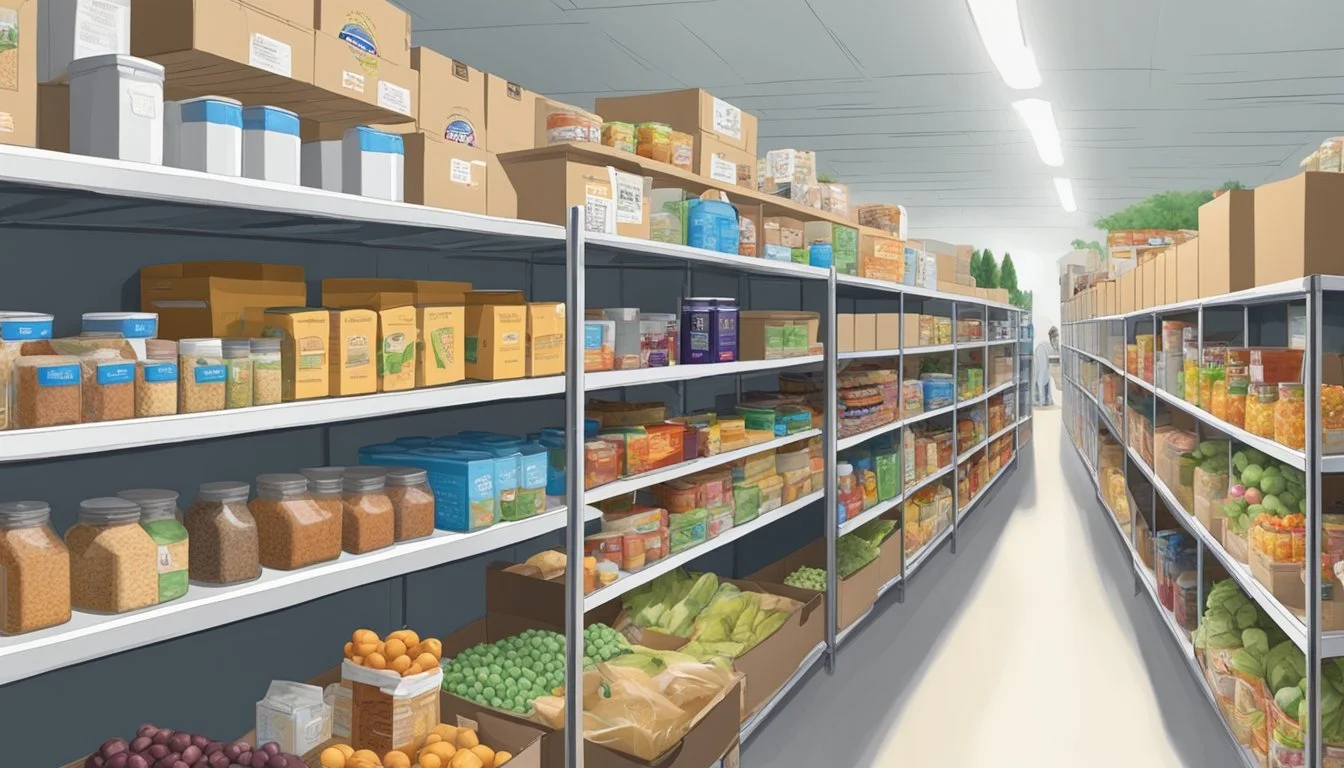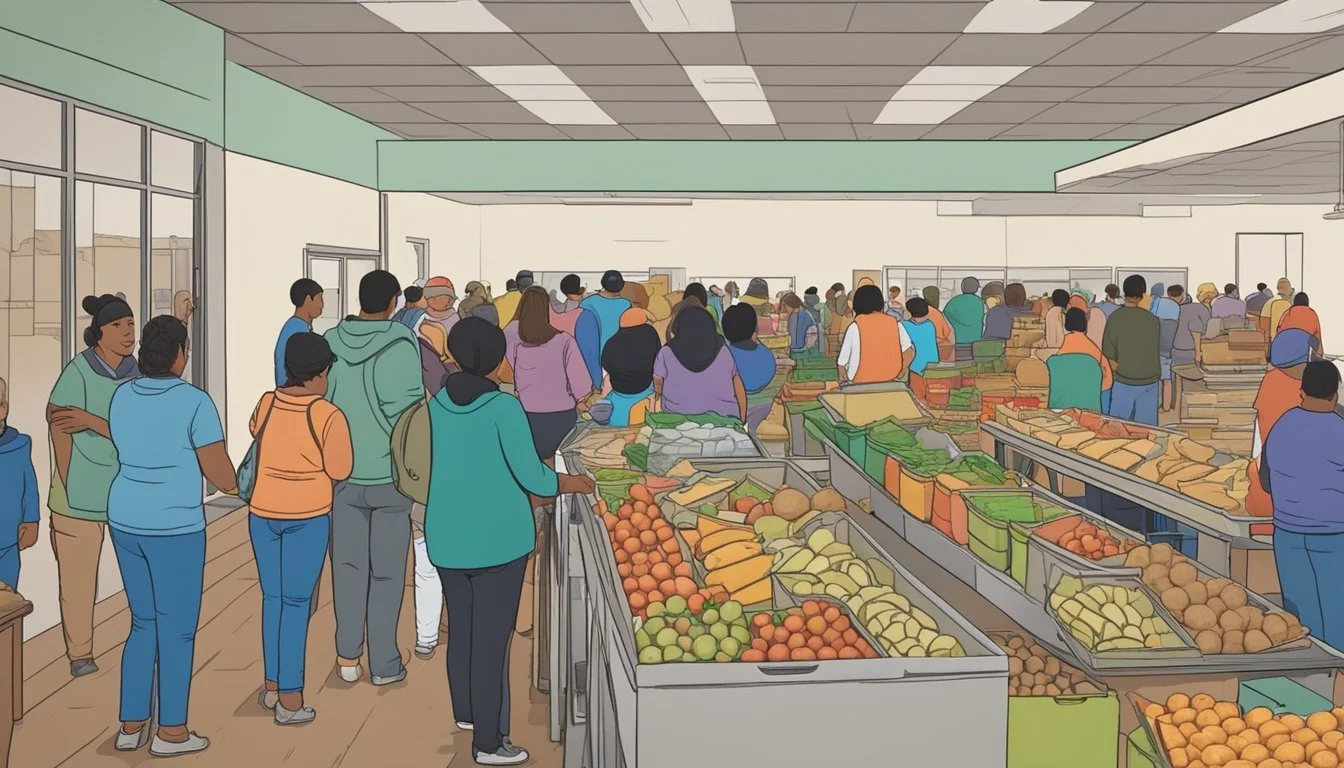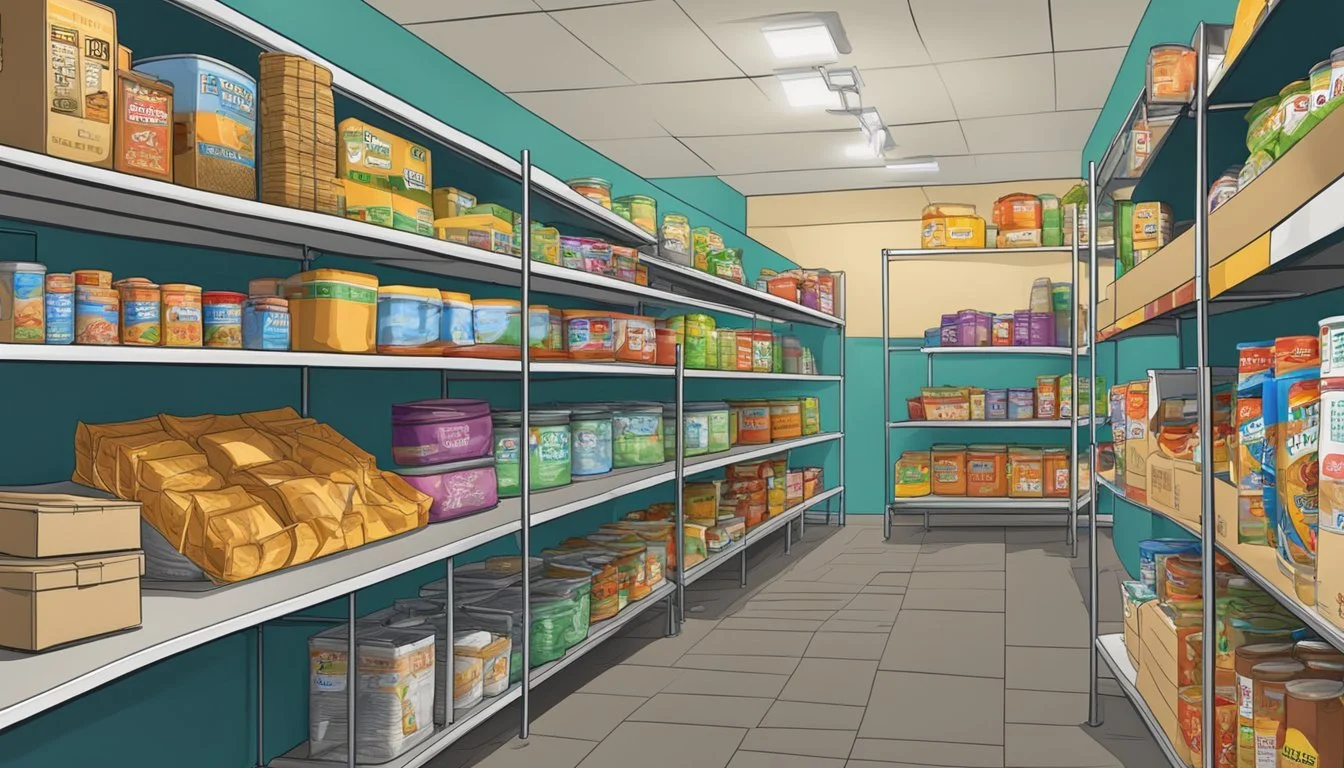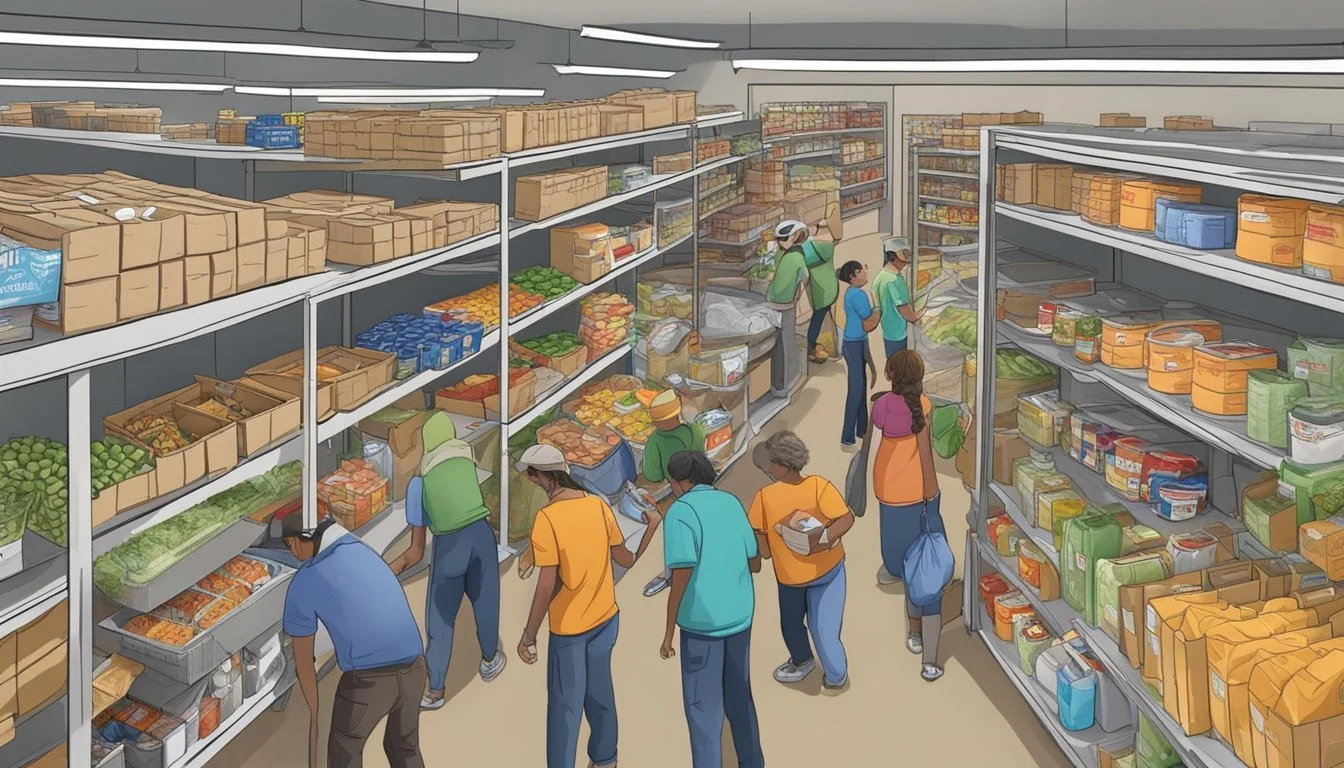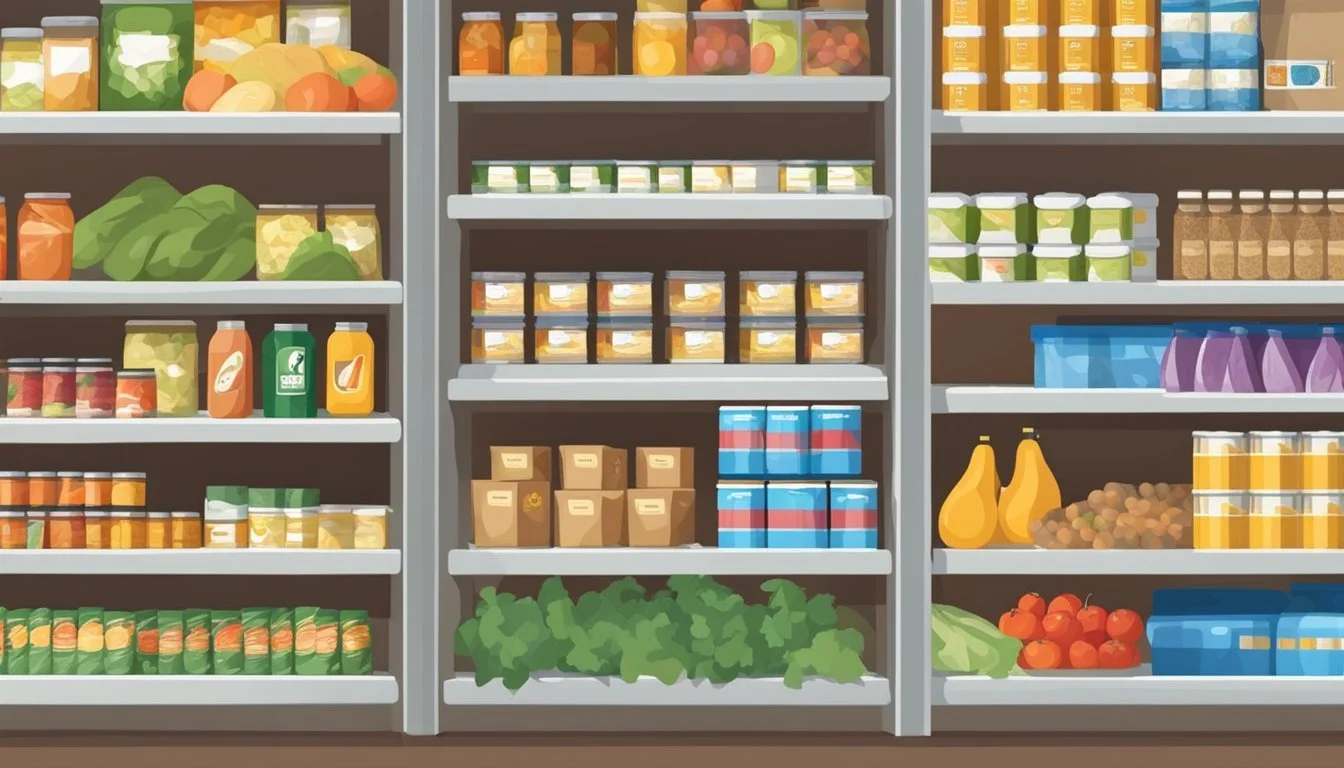Free Groceries and Food Pantries in Zapata County, Texas
Your Essential Guide
This Article is Part of Our Guide on Free Groceries in Texas
Zapata County, Texas, recognizes the importance of providing nutritional support to its residents in need. Food pantries and free grocery programs are vital resources for families and individuals facing food insecurity. These services ensure that no one in the community has to go without basic food supplies, offering a range of food items to support a healthy diet. These pantries and programs operate with the help of local volunteers and organizations committed to addressing hunger in the region.
The provision of free groceries through food pantries in Zapata County is not just a charitable act; it is a coordinated effort to bolster the well-being of the community. Food assistance services are designed to be accessible and to provide a variety of food options, ranging from fresh produce to non-perishable items, to accommodate the diverse needs of the population they serve. Collaboration with food banks and other food rescue organizations ensures a steady supply of foodstuffs, making these pantries a reliable source of aid.
Navigating the network of food assistance in Zapata County is made easier with a comprehensive guide that lists available resources, including locations, operating hours, and contact information. This guide serves as a valuable tool for individuals seeking support, allowing them to find the help they need promptly and efficiently. As a reflection of the community's solidarity, these free food resources demonstrate Zapata County's commitment to ensuring that all residents have access to basic nutritional needs.
Understanding Food Insecurity in Zapata County
Food insecurity in Zapata County, Texas, affects a significant portion of the community, impacting individuals' health and the local economy. Various factors contribute to this critical issue, which manifests in both urban and rural areas within the county.
Prevalence of Food Insecurity
In Zapata County, food insecurity is a pressing concern, with many individuals lacking consistent access to nutritious food options. Although official statistics for the county can fluctuate, indicators suggest that food insecurity rates could be comparable to or higher than state averages due to factors like lower income levels and limited access to grocery stores. This issue affects diverse groups within the community, from children and low-income families to the elderly.
Impact of Food Insecurity
Food insecurity in Zapata County has far-reaching consequences. Health is significantly impacted, as individuals facing food insecurity are at an increased risk for chronic diseases such as diabetes and heart conditions. Additionally, when children face food shortages, it can affect their growth, development, and educational outcomes. The absence of adequate nutrition crystallizes not only as a health issue but also as a community and economic challenge, hindering the overall potential for economic growth and resilience.
Local Food Banks and Pantries Overview
In Zapata County, Texas, the local community combats food insecurity through a network of food banks and pantries. These institutions play a pivotal role by providing necessary food resources to residents in need.
Role of Food Banks in Zapata
Food Banks, such as the local branch of Feeding America, are crucial in Zapata County. They operate as the central storage hubs, collecting donations of food and funds that can support a multitude of community food pantries. These food banks source, store, and distribute large quantities of groceries, often at no cost, to individuals and families facing food scarcity.
Food Pantry Network
The Network of Supportive Food Pantries in Zapata County is extensive and integral to food assistance delivery. Pantries, often supported by resources from a local food bank, offer more direct interactions with community members. They provide a diverse range of food items on a more personal level, ensuring that the nutritional needs of the people are met. Supportive food pantries in Zapata County may include fixed locations as well as mobile distributions that reach different parts of the community, adapting to residents' needs for easier access.
These pantries often rely on the support and structure provided by the Local Food Bank, which coordinates efforts and ensures a steady supply of food. Community members who need assistance with groceries can turn to these supportive entities for short-term relief, which can be a pivotal aid for families working towards financial stability.
Food Assistance Programs
In Zapata County, Texas, residents facing food insecurity can access a variety of food assistance programs. These programs, supported by both governmental and non-profit sectors, provide essential services ranging from emergency food supplies to ongoing nutritional support.
Federal and State Support
Supplemental Nutrition Assistance Program (SNAP): Formerly known as food stamps, SNAP offers nutritional support by providing eligible low-income individuals and families with benefits used to purchase food. In Texas, SNAP is administered by the Texas Health and Human Services Commission.
Eligibility: Household income and size are considered.
Application: Can be done online or at a local Health and Human Services office.
The Emergency Food Assistance Program (TEFAP): Under TEFAP, the federal government supplies food at no cost to those with low income, including both shelf-stable and fresh food products.
TEFAP in Texas: Operated by the Texas Department of Agriculture.
Distribution: Through local food banks and pantries.
Women, Infants, and Children (WIC): Aimed at safeguarding the health of low-income women, infants, and children up to age 5 by providing nutritious foods and education.
Benefits: Include food packages and breastfeeding support.
Accessibility: Available at WIC clinics throughout Zapata County.
Local Community Programs
Local food pantries and soup kitchens in Zapata County play a crucial role in addressing immediate food needs. They offer a network of assistance through the following means:
Food Pantries: Distribute free groceries and personal care items to those in need. Locations can be found across Zapata County.
Drive-Thru Pantries: Allow for convenient pick-up of food without the need to leave one's vehicle, thereby increasing access for individuals with mobility issues or transportation constraints.
Non-profit organizations and local charities often partner with federal programs to widen the scope of services. For instance, Feeding America works with local food banks to operate drive-thru pantries and provide guidance on applying for SNAP benefits. The combined efforts of these entities ensure a comprehensive approach to reduce hunger and improve nutrition in the community.
Locations and Hours of Operation
In Zapata County, Texas, residents have access to food pantries that provide free groceries. The following subsections outline how to find these pantries and detail their operating hours, ensuring community members can secure the assistance they need.
Finding Food Pantries Near You
Residents can locate food pantries in Zapata County by contacting the South Texas Food Bank, which offers detailed information about food assistance services in the area. Another efficient way to find local food banks is through national networks such as Feeding America, which provides a searchable directory of food banks across the country.
Operating Hours and Contact Information
Zapata, TX Food Pantry
Address: Zapata, TX 78076 (exact address to be confirmed via phone)
Phone: (956) 765-9327
Hours: Operation hours should be verified by phone as they may vary.
Maverick County Food Pantry
Address: 1823 S. Veterans Blvd., Eagle Pass, TX 78852
Phone: (830) 757-6424
Hours of Operation: Monday through Friday from 8 A.M. to 4:30 P.M.
Residents in need of food assistance should contact the listed pantries directly to confirm operating hours and address details, as this information is subject to change.
Services Offered by Food Pantries
Food pantries in Zapata County, Texas, provide essential services to the community by distributing groceries and offering additional support services. They address the immediate food needs of residents with a focus on nutrition and resource connection.
Types of Food and Items Available
Pantries typically offer a variety of grocery items which include:
Non-Perishable Food Items: Rice, pasta, canned vegetables, and canned fruit.
Produce: Seasonal fruits and vegetables when available.
Meats: Frozen meats which may include chicken, beef, or pork.
Canned Goods: Soups, stews, and other canned protein sources.
Baby Formula: For families with infants, subject to availability.
Diapers and Toiletries: Basic personal care items to meet non-food needs.
They may provide bags of food, which contain an assortment of these items, allowing for balanced meal preparation.
Additional Services and Support
Beyond meeting basic nutritional needs, food pantries may offer:
Referrals: Guidance to additional support services and programs.
Services Offered: Some pantries feature client-choice models, allowing individuals to select items according to their needs, or they may provide pre-assembled packages.
Additionally, food pantries often display Pantry Pictures to showcase the range of services offered and the community they serve.
Eligibility and How to Apply
Securing food assistance in Zapata County requires understanding the eligibility requirements and navigating the application process. Residents may have access to programs like SNAP, TEFAP, and more, each with specific criteria and procedures.
Understanding Eligibility Requirements
Eligibility for food assistance programs in Zapata County typically hinges on household income, size, and specific need. Most programs establish their income limits as a percentage of the Federal Poverty Line. For instance, to be eligible for SNAP (Supplemental Nutrition Assistance Program), a household's gross income must generally be at or below 130% of the federal poverty level. Additionally, residents may automatically qualify if they participate in other assistance programs like TANF (Temporary Assistance for Needy Families) or Medicaid.
When assessing eligibility, the following factors are usually considered:
Household size: Larger households often have higher income thresholds than smaller ones.
Income: This includes all sources of income, such as wages, unemployment benefits, and pensions, before taxes.
Expenses: Some programs take into account out-of-pocket expenses like child care, housing, and medical expenses, particularly for elderly or disabled family members.
Resources: Certain assets, such as bank accounts and vehicles, may affect eligibility, though many programs have relaxed asset tests.
Application Process
To apply for food assistance, residents should contact their local food bank or the Texas Health and Human Services Commission. Applications for SNAP can be submitted online, by mail, or in person. Once the application is completed, an interview will typically be scheduled to verify eligibility.
The application process usually involves the following steps:
Gather Documents: Proof of income, identification, and residency may be required.
Complete Application: Accurately fill in all necessary forms for the requested program(s).
Interview: Conducted by a caseworker to discuss the application and confirm information.
Determination: The agency will assess eligibility and inform applicants of their status.
For specific contact information and guidance, individuals can visit the Texas Health and Human Services website or reach out to a local food pantry. It's advisable for residents to call ahead for the latest hours and requirements, as these can change.
How to Support Local Food Banks and Pantries
Supporting local food banks and pantries in Zapata County, Texas, is essential to sustaining the community aid network. Involvement can be through volunteering time or providing donations, both of which are crucial for these organizations.
Volunteering Opportunities
Local food banks and pantries rely on the dedication of volunteers to operate effectively. Community members can offer their time in various roles, from sorting food donations and preparing food packages to administrative tasks and assistance during food distribution events. Those interested in volunteering can contact their nearest food bank to learn about specific needs and scheduling.
Sorting and Packing: Volunteers help organize and pack donations for distribution.
Administrative Support: Provide help with clerical work and coordination.
Distribution Assistance: Aid in handing out food to families in need.
Donating Food and Funds
Donations constitute the backbone of food banks and pantries, and there are ways to contribute:
Food Donations: Non-perishable items, such as canned goods, rice, and pasta, are always in demand. Individuals can check with local food banks for their current needs to ensure that they donate the most helpful items.
Most Needed Items Description Canned Vegetables Low-sodium preferred Peanut Butter A reliable source of protein Whole Grain Rice Nutritious staple
Financial Support: Financial contributions allow organizations to purchase fresh food and cover operational costs. Monetary donations can typically be made through the food bank's website or by mail. Partner organizations may also match individual donations, amplifying the impact of financial support.
Offering help through Helping Hands programs or similar community efforts can significantly enhance the services provided by food banks and pantries. Whether it is lending time as a volunteer or bolstering resources through donations, every contribution reinforces the partnership between food banks and the community.
Innovative Food Distribution Methods
In Zapata County, Texas, innovative models for food distribution have been adopted to ensure community members facing food insecurity can access necessary resources in a convenient and dignified manner. These methods aim to meet the needs effectively while maintaining efficiency.
Drive-Thru Pantries and Mobile Pantry Programs
Drive-thru pantries are increasingly popular in Texas as they offer a convenient option for families to receive food assistance without leaving their vehicles. Local food banks have adapted to this model, allowing residents to pick up a nutritious mix of free food and groceries. The key feature of this method is the streamlining of distribution to enhance the experience and reduce the time recipients spend collecting their supplies. Additionally, mobile pantry programs operate to reach those in outlying areas of the community. These programs bring food directly to individuals who might not otherwise have access due to transportation issues or geographical constraints.
Location: Varied throughout Zapata County
Distribution: Pre-packaged food kits and fresh produce
Accessibility: High for individuals with cars
Frequency: Often weekly or bi-weekly distributions
Partnerships with Local Businesses and Farms
Partnerships with local businesses and farms play a critical role in providing a sustainable source of fresh produce and food items for the pantry programs. By collaborating with these partners, pantries can offer a wider variety of fresh, healthy food options for the community. These alliances ensure a mutually beneficial relationship: farms and businesses often donate surplus produce reducing waste, while pantries receive quality, farm-to-table options for distribution. Farms in particular become integral to offering fresh, nutritious options to those in need, reinforcing the local food system and fostering community resilience.
Advantages: Fresh, nutritious options; stronger community ties
Partners: Local businesses and farms around Zapata County
Outcome: Improved food pantry offerings; reduced food waste
Frequently Asked Questions
Accessing food assistance in Zapata County, Texas, involves understanding the available programs and dispelling common myths. This section aims to provide clarity through a set of frequently asked questions and important clarifications.
Commonly Asked Questions About Food Assistance
Q: Where can residents of Zapata find food pantries? A: Residents of Zapata have access to multiple food pantries that offer essential assistance. These pantries distribute groceries to individuals and families facing emergency situations and provide consistent support networks within the community.
Q: Are there any drive-thru pantries available in Zapata County? A: Yes, there are drive-thru pantries that facilitate food collection. Individuals can drive up, check in from their car, and have pre-packed boxes or bags of food placed directly into their trunk.
Q: What are the eligibility requirements for using a food pantry? A: While specific requirements may vary, most food pantries inquire about family size, income, and dietary preferences to ensure appropriate support is provided.
Misconceptions and Clarifications
Q: Do food assistance programs only offer non-perishable items? A: Contrary to this common misconception, many food assistance programs, including those in Zapata County, provide fresh fruits and vegetables in addition to non-perishable items.
Q: Is food assistance available only to those with extremely low income? A: Food assistance is not exclusively for those with extremely low income. Many programs are designed to help a range of low to moderate-income families, aiming to support anyone in need within the community.

